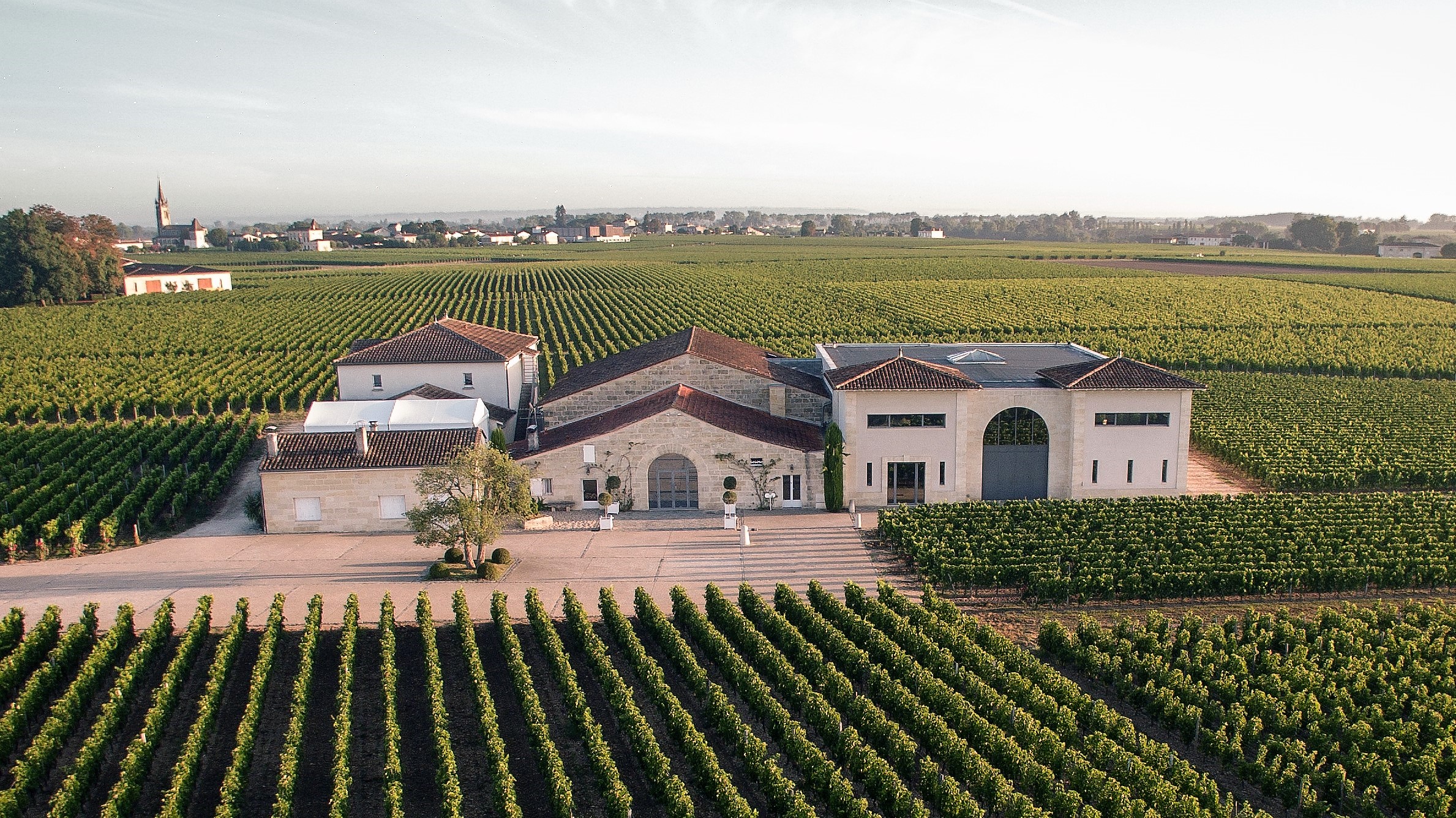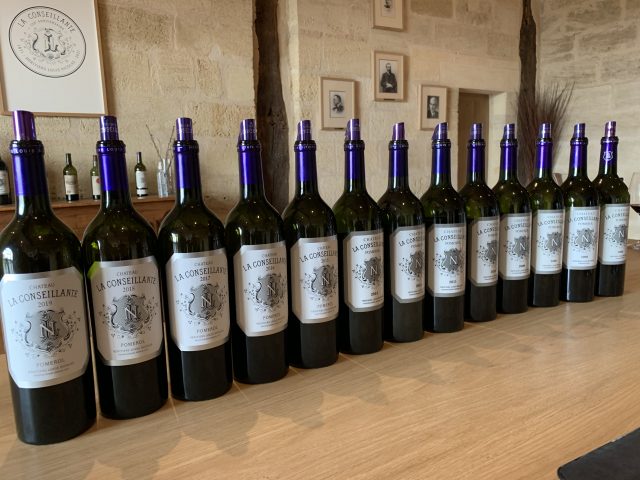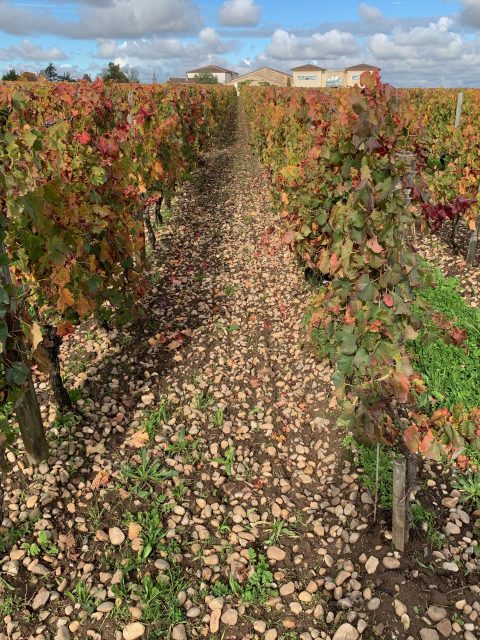The Nicolas Family marks 150 years at Chateau La Conseillante
By Colin Hay2022 will see the release en primeur of La Conseillante 2021. That might not in itself seem especially remarkable – until, that is, one considers that 2021 is the 150th vintage of La Conseillante under the uninterrupted ownership and guardianship of the Nicolas family.

To mark the momentous anniversary, I was invited to a rare and truly wonderful vertical tasting at the Chateau on 3 November last year with La Conseillante’s estate manager, Marielle Cazaux. Jane Anson and Jonathan Choukroun-Chicheportiche and I tasted each of the great vintages from this almost mythic estate back to and including the 2005.
My impressions of the evolution of La Conseillante over the last two decades and my full tasting notes in a link appear below. But before we get to that, it is perhaps first illuminating and interesting to place the recent history of the property in its longer term context. Here I am greatly aided by the publication, also timed to mark the 150th anniversary, of a brilliant new, official, complete and authoritative history of La Conseillante – La Conseillante: A Family Passion for 150 Years (First Press Editions, 2021).
The eloquent and at times touching foreword to the book is by Michel Rolland, La Conseillante’s current consultant oenologist and long-term friend of the family. In it he recounts some of his earliest experiences of a property that has remained close to his heart since his childhood. How many of us would have imagined that he received his catechism lessons from the redoubtable Mademoiselle Nicolas herself?
His long-standing affection for the property and the family that has guided its evolution for a century and a half is palpable. He is also arguably better placed that anyone to encapsulate the essence of this archetypal plateau Pomerol: “The delicacy, the natural elegance, aromas of ripe fruit and Morello cherries have always made La Conseillante an elegant, harmonious wine, whatever the vintage” (12). Our vertical tasting very much confirmed that impression.
No less heartfelt is former French Prime Minister, Dominique de Villepin’s, preface to the book. After describing his own long-term relationship with the property and its wines, again back to his childhood memories of following his grandfather to the cellar and back in search of ‘the purple passion’, he too seeks to capture its essence. He does so extremely well, noting “La Conseillante’s unique aromas of truffle, violet and liquorice, black and red fruits with a hint of spice” and its “delicacy, balance, body, complexity and fine tannins”. La Conseillante, in terms that my own notes will echo, is “supple, silky and velvety … meant for long cellaring” (19). It is interesting how many of the same descriptors turn up in my own tasting notes – written well before I had read his preface – below.

The turbulent history of La Conseillante
All of this might lead one to imagine a simple and benign history of unbridled and uninterrupted success reaching back into the distant past. But that is most definitely not the story of La Conseillante – not until very recently, at least.
Indeed, what is arguably most interesting about this detailed family history is the insight it offers into the invariably turbulent and often brutal succession of shocks and challenges that mark, like pot holes, the path to contemporary viticultural greatness – in Pomerol, above all.
We learn a great deal about Pomerol, and Bordeaux more generally, by understanding the at times somewhat chequered history of La Conseillante.
One of the reasons for this is that La Conseillante is, in fact, one of the very few Pomerol properties to be able to trace a direct lineage back to late 17th century.
At the time, the property was owned by the Pipaud family and was known as Domaine de Mautretat. Its small farmhouse, which still stands today, was built in 1687. Very little of its meagre acreage was under vine and the Pipauds struggled to make a living.
Unremarkably, then, the property was put up for sale in 1735. No less remarkably, there were initially no takers. But it was finally purchased by Catherine (‘La Demoiselle’) Conseillan – la femme de fer, as she was to become known (more or less affectionately).
Catherine had made her money from trading iron, but her sobriquet was no doubt just as much linked to her somewhat stubborn demeanour and steely temperament. And it was precisely that disposition that was the vital ingredient in the renovation of the then dilapidated estate over which she presided. In the process, she expanded the proportion of the property under vine and renamed Domaine de Mautretat to reflect her role in its transformation. La Conseillante was born.
But all of that might well have come to nothing, were it not for her next move. For rather than passing the estate in her will to its seemingly rightful heirs, her siblings, she by-passed them in favour of her favourite niece, Marie Despugnol – the one with the affluent merchant husband, Jean Fourchaud. This was undoubtedly (and perhaps characteristically) savvy.

For, seven years later, on her death in 1777, it would see the property pass into their hands, setting La Conseillante on to a rather different track to the one it would undoubtedly otherwise have taken.
The initial progression in the vineyard was slow but steady and cumulative. By 1868, the fortunes of the nascent appellation were growing and La Conseillante was ranked 7th in Pomerol by quality in the famous Féret guide to the vineyards of Bordeaux. With the Fourchaud family’s investment it had, by this time, also expanded to include a parcel of what would later become Chateau L’Évangile.
Here we come to the next great turning point in La Conseillante’s history – the acquisition of the property, in 1871, by the Nicolas family. Formally, the property was purchased, for the tidy sum of 75,000 Francs, by the family’s négoce business Nicolas Frères.
The latter already owned Clos l’Eglise and Plince in Pomerol, and Bel-Air in Lalande de Pomerol. But it was Louis Nicolas who was recorded as the proprietor in the 1884 edition of Féret, his brother having died the year before and his children having inherited Clos L’Eglise at the same time.
This, however, was a remarkably difficult period – for La Conseillante, for Pomerol and for Bordeaux more generally. Nature and geo-politics combined; and neither was kind. After two consecutive wars with other European countries, systematic restrictions on trade limited the export sales on which the property had increasingly come to rely; and a plethora of new vine diseases, more notably of course phylloxera, started to plague the vineyards of the region.
At La Conseillante itself, phylloxera was discovered first in the section of vines adjacent to Vieux Chateau Certan in June 1876.
Initially, and seemingly with some success, it was treated with carbon sulphide injections in the base of the vines themselves. But this was only ever going to a temporary – and largely pyrrhic – victory, with the first recorded replanting (albeit, of just 24 rows) on American rootstock in 1878.
The 1880s were particularly challenging, as phylloxera slowly penetrated the vineyard and a host of other maladies were detected. As the text has it, the estate’s journal reads like a “litany of woes” (39). It was the stuff of vinous nightmares: mildew, oidium, anthracnose, white rot, black rot and, in 1889, cochylis caused by caterpillars immediately prior to the harvest. As the text explains, “it look eighty-two working days for the nimble-fingered women [who worked the vines] to pick off the rotten fruit so that it did not affect the rest” (39).
The turn of the decade brought a long overdue change in fortunes as La Conseillante entered a more benign period, with replanting finally put paid to phylloxera. It was also at this time that drainage was installed and the remaining vines that had been used for white and rosé production were pulled up and replanted with Malbec. The result was a vineyard planted roughly one-third each of Merlot and Malbec, with the remaining third equally partitioned between the Cabernets (Franc and Sauvignon).
The dawning of the new century saw La Conseillante taking on a more political role, with Louis Nicolas co-founding the Syndicat Viticole de Pomerol in 1900 and becoming its first President. This was is a position he would hold until his death.
The négociant business was sold to Jean-Pierre Moueix in 1953, allowing Louis more time to concentrate on La Conseillante. But here again we enter another very difficult time for the property, for Pomerol and for Bordeaux more generally. For the late spring frosts of 1956 essentially destroyed the entire vineyard, leaving no income from the 1956 and 1957 vintages – and, of course, the considerable expenditure associated with systematic replanting.
1971 marked the 100th anniversary of the Nicolas family’s purchase of the estate. It also saw a massive and very significant further investment, with the installation of an entirely new winery of a highly innovative kind – with ten temperature-controlled stainless steel vats. This was the first of its type on the right-bank, following the lead of La Mission Haut-Brion in Pessac-Léognan. It undoubtedly helped La Conseillante start to build the exceptional reputation it now enjoys for the purity, refinement and precision of its wine-making.
Though, at the time, the wine-making itself remained in the hands of the family, the 1970s also saw La Conseillante’s first use of external consultant oenologists. And the list of those who have since held the role is incredibly impressive:
Partner Content
1970-82 – Émile Peynaud (Head of Oenology, University of Bordeaux)
1982-2004 – Pascal Ribéreau-Gayon (Peynaud’s successor)
2004-2011 – Gilles Pauquet
2011-2013 – Jean-Claude Berrouet (the former wine-maker of Petrus)
2014 onwards – Michel Rolland
In 2001, another symbolic corner was turned with the appointment, again for the first time, of a non-family member as estate manager and wine-maker. The appointee was the highly talented Arnaud de Lamy and 2001 was his first vintage.
In 2004 he, in turn, was replaced by Jean-Michel Laporte. Working with La Conseillante’s newly appointed consultant oenologist, Gilles Pauquet, he oversaw a partial replanting of the estate to increase the proportion of Cabernet Franc as well as seeking to bring the wine to new audiences.
2011 saw another very significant investment, with the remodelling of the offices, winery and cellar to further increase the precision and definition in the wine-making. Architect Bernard Mazières was commissioned for the project, with the 2012 being the first vintage made in the new facility.
The redesign and remodelling of the winery more than doubled the number of vats available, allowing a much more precise parcel-by-parcel vinification in dedicated vats for the first time.
The final phase in the history of the property effectively begins with the appointment, in June 2015, of the brilliant and highly-talented Marielle Cazaux, from near neighbour Petit-Village, as estate manager and wine-maker. She, too, has overseen important innovations – above all in the vineyard and the philosophy underpinning La Conseillante’s vineyard and wider ecosystem management.
Since her appointment, La Conseillante has moved more concertedly towards a more sustainable viticulture, attaining in the process HVE3 and ISO 14001 certification and using a number of practices inspired by biodynamic viticulture. There is also now widespread seeded crop cover in the vineyard, improving water retention, limiting hydric stress and improving biodiversity above and below the soil. In addition, and to further improve biodiversity in the vineyard, an impressive 200 metres of hedges and a number of chestnut and assorted fruit trees have been planted around the perimeter of the estate, in a planting programme that will remain active until 2025.
It is perhaps not surprising, then, that as Michel Rolland puts it in the conclusion to his foreword, “in spite of the anxiety it creates, climate change has enabled us to produce the most beautiful vintages in Bordeaux’s history: 2015, 2016, 2018, 2019, 2020. These classic vintages of La Conseillante will forever mark the history of their estate and the Nicolas family” (13). Care and sensitivity to the biodiversity and health of the vineyard is crucial to this success.
The vineyard
Finally, it is important to turn to the composition of the vineyard itself. What is remarkable here is how little has changed over such a long period of time.
 If one compares the shape, boundaries, form and even the overall size of the vineyard in 1868 to that today, the differences are tiny – with the property still comprised of the same large single central block of contiguous parcels. Today those parcels sum to 11.79 hectares; very similar to the figure in 1868.
If one compares the shape, boundaries, form and even the overall size of the vineyard in 1868 to that today, the differences are tiny – with the property still comprised of the same large single central block of contiguous parcels. Today those parcels sum to 11.79 hectares; very similar to the figure in 1868.
Its configuration, too, remains unchanged, with the same broad ‘S’-shape running from the northern parcels which border Petrus and Evangile, past Vieux Chateau to the west, to the southern and eastern parcels bordering Cheval Blanc and Beauregard.
<iframe src=”https://drive.google.com/file/d/1p040n7HrKVfLZgkcJ-gy74uyXewQN0yh/preview” width=”640″ height=”480″ allow=”autoplay”></iframe>
Click here to view a map of La Conseillante
The current composition of the vineyard of La Conseillante
Reproduced with permission: Ó Chateau La Conseillante, 2021
But this is by no means a single terroir estate. In fact the composition of the terroir changes quite significantly. The northern-most parcels, next to Petrus, are of pure (smectite) clay with a sub-soil rich in iron deposits (from the famous crasse de fer). To the west, towards Vieux Chateau Certan, the terroir is more gravel-rich, with the gravel top-soil varying in depth from 10 to 100 cms over the same iron-rich clay sub-soil. And as the terrain slopes gently from La Conseillante itself towards Cheval Blanc the terroir changes again, from a mixture of clay and gravel to sand.
La Conseillante is comprised, as the detailed map shows, of 16 plots. Of the 13 plots in production today, 10 are Merlot; 3 are of Cabernet Franc. As its name would suggest, Le Potager is today used as a vegetable garden. The 2 remaining plots lie fallow. One of them, Les Cerisiers, will shortly be replanted with Cabernet Sauvignon – a varietal not grown at La Conseillante since 1918 but, before then, representing up to a sixth of the production of the estate.
La Conseillante’s peculiar anomaly
La Conseillante also has a final, little-known and rather unique specificity – not quite a hidden secret, but certainly a very peculiar anomaly.
Though it is thoroughly in and of Pomerol – almost the archetypal plateau Pomerol – until very recently not all of its vines were in fact grown within the appellation itself (including parcels which always make it into the first wine).
When the appellation was created in 1936, the INAO drew the boundary between Pomerol and St Emilion in such a way as to place four of La Conseillante’s existing parcels (Tram, Dubuch, Cheval Blanc and Milieu), quite literally, ‘the wrong side of the track’, across the road in Saint-Emilion.
As these parcels had always been used to make La Conseillante’s Pomerol, the property was given a special, though time-delimited, dispensation from the INAO to continue to include them within the final assemblage without losing the appellation status.
In a rather interesting twist to that story, in 2021 that dispensation came to an end – posing, once again, the question of their status. That question has very recently and, thankfully, been resolved. The parcels now enjoy a rare (indeed, unique) double identity – belonging to the appellations of both Pomerol and Saint-Emilion simultaneously.
Marielle reassures me, however, that there is no plan to produce a St Emilion cuvée of La Conseillante!
Click here to read the full tasting notes from the vertical tasting.
Related news
Master Winemaker 100: Jesús Mendoza
Coterie-backed wine tech company raises nearly £1.1 million in crowdfunding




